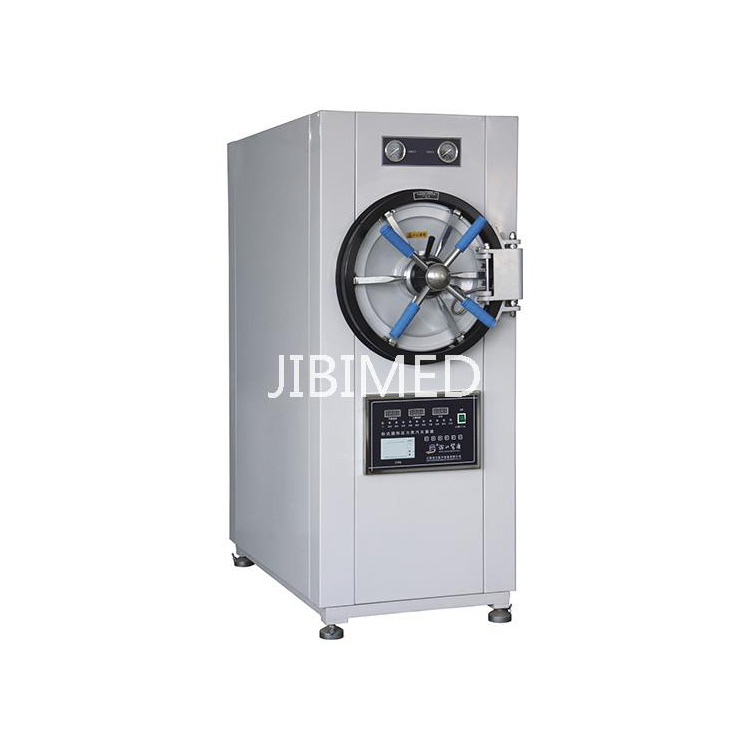High pressure Steam Autoclave temperature and maintenance time
2023-10-18
Exhaust pressure Steam Autoclave: The pressure rises to 103.4kPa (1.05kg/cm²), the temperature reaches 121.3°C, and it is maintained for 15 to 30 minutes to achieve the purpose of sterilization.
Pulsating vacuum pressure Steam Autoclave: The steam pressure is 205.8kPa (2.1kg/cm²), and the temperature reaches above 132℃ and is maintained for 10 minutes, which can kill all microorganisms including spores and spores with strong resistance.
Extended information:
Precautions for high pressure steam sterilization:
1. The package should not be too large or too tight, generally less than 30cm×30cm×50cm.
2. Do not arrange the packages in the pressure cooker too densely, so as not to hinder the penetration of steam and affect the sterilization effect.
3. When the pressure, temperature and time meet the requirements, the indicator tape and chemical indicator should appear sterilized in color or state.
4. Sharp instruments such as knives and scissors should not be sterilized by this method to avoid becoming dull.
Radiation sterilization:
Radiation sterilization is a method of sterilizing using radiation under certain conditions. The more commonly used ones are ultraviolet rays, and others include ionizing radiation (rays that accelerate neutrons, etc.). Lasers with wavelengths between 25,000 and 80,000 nanometers also have strong sterilizing capabilities, with wavelengths of 26,500 nanometers being the most effective. Radiation sterilization is limited to certain materials and is difficult to use widely because of the complex equipment required.
Steam Autoclave Osmotic pressure sterilization:
Osmotic pressure sterilization is a method of sterilizing using high osmotic pressure solutions. In high-concentration salt or sugar solutions, cells undergo plasmolysis due to dehydration and cannot carry out normal metabolism, resulting in the death of microorganisms.
Chemical reagent sterilization:
Most chemicals have bacteriostatic effects at low concentrations and bactericidal effects at high concentrations. Commonly used are 5% carbolic acid, 70% ethanol and ethylene glycol. Chemical sterilants must be volatile in order to remove residual pharmaceuticals from sterilized materials.



